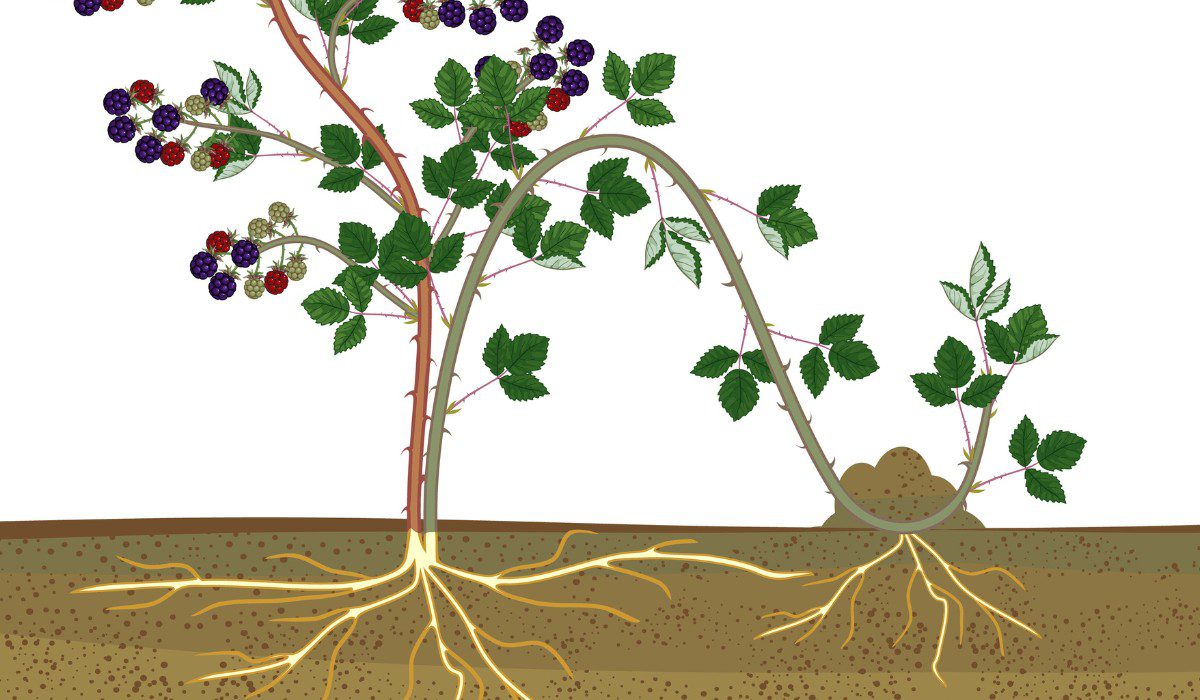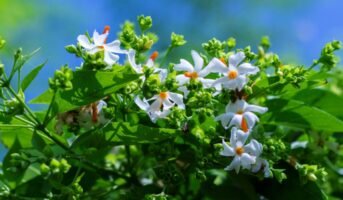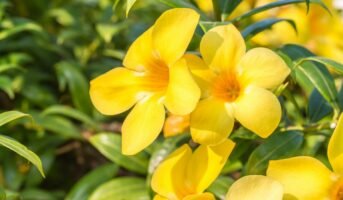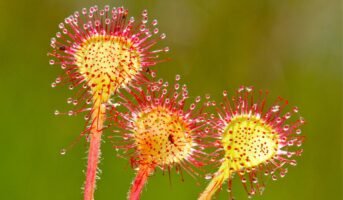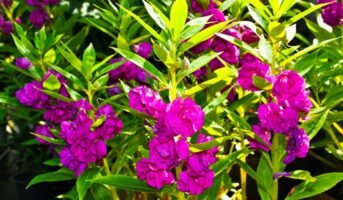Layering, a method of plant multiplication where a young plant keeps some connection to the mother plant while growing new roots, can be caused by changes in stem architecture. Comparable to simple layering,
The tried-and-true asexual propagation method of layering encourages roots without specialised tools or artificially created environmental conditions like a mist bench. The backyard gardener can quickly master the techniques required. In a smaller space, layering techniques enable the growth of suitable shrubs, vines, and houseplants. The likelihood of success is frequently higher when propagating difficult-to-root plants with layering techniques than by cuttings.
Moreover, a month or two following, the daughter plants are prepared for transplantation and separation. Spring or the beginning of summer are good times to start layering. To have more plants to grow at home or to share with friends and family, many gardeners may have an heirloom vine, shrub, or houseplant that they would like to duplicate. It is imperative to remember that there may be current patent regulations and that patents may cover many more contemporary cultivars.
| Type of modified stem structured | Growth habit | Plants propagated by these structures |
| Stolons | A stem that trails or arches and spreads out horizontally above or below the ground, producing new plants at its nodes. | Dogwood (Cornus stolonifera), bugleweed (Ajuga), mint (Mentha) |
| Runners | A unique stolon develops horizontally above ground from the leaf’s axil at the crown (often without leaves). | Strawberry (Fragaria), spider plant (Chlorophytum), strawberry geranium (Saxifraga) |
| Rhizomes | A horizontal stem differs from a stolon because it has been altered to function as a storage organ. Commonly present in ferns and monocots. | Iris, Solomon’s seal (Polygonatum) |
| Crowns | The area of a plant where new shoots first appear and where it grows. | Many herbaceous perennials and ornamental grasses. |
| Offsets | A short, horizontal branch grows independently from the main stem at its base. | Many bulbs, daylily, Hosta, palms |
| Suckers | Roots or roots that sprout from underground shoots. Most frequently, these come from roots. | Raspberry (Rubus), pawpaw (Asimina) |
Patent Laws
Newly created plants can be patented, just as new inventions and technologies. They cannot be multiplied at this time according to the law. They know if a plant is patented or not is essential to preventing unauthorised multiplication. Many of your favourite vintage cultivars can now be shared and reproduced legally because they are in the public domain. All the fascinating and frequently disease-resistant new plant kinds you see in garden centres every spring could not have been possible if plant breeders had the money to do so. Restricting home replication for personal use, though, would seem harsh.
Key points to remember
- A stem can generate roots while still linked to the parent plant using the asexual propagation technique known as layering.
- As the new plant’s roots spread out, the parent plant supplies it with nutrients and water.
- Layering is helpful for plants that are challenging to duplicate using standard techniques.
- Plants with stiff stems that would be challenging to grow using conventional techniques are appropriate for air layering.
Layering process
An earthen hook-like device is used to secure a low-growing stem after it has been lowered till it hits a hole dug in the ground. However, a few inches of leafy growth must remain above the earth for the bent stem to sprout into a new plant. Trim a bit of skin from the lower-facing stem section before burial to help the roots. If you are using rooting hormone, cutting the stem as soon as possible beneath a node is advisable. The resulting notch should be wedged open with a toothpick or other piece of wood before the hormone is applied and the animal is buried.
The submerged stem half grows new roots that firmly anchor in the soil when the above-ground parts divide into new plants. The process is repeated until the stem’s tip is long enough to create a row of plants joined by humped, occasionally concealed stems. Once more, the top will yield better results if the plant is more erect.
After the treatment is complete, it is critical to maintain regular irrigation on the buried portion until the roots emerge. The new plant may need one to two years to develop the strength necessary to live independently. When that occurs, the two plants must be divided by cutting the original stem where it enters the ground.
Layering methods
The five fundamental layering tips are complicated (serpentine), simple, mound (stool), and air. For the tip, simple compound layering mounds a section of the buried stem; in contrast, new roots grow above the soil’s surface for air layering.
Tip layering
A piece of the shoot tip or the shoot tip itself is buried in a hole, anchored if necessary, and covered with media or soil. A flexible stem or cane from the most recent growing season is used for this.
Some plants, like cane berries, prefer to root close to the tip of the stem to the middle. Insert the end of the shoot into a three to four inches deep hole. Several plants, such as blackberries and purple and black raspberries, are simple to multiply.
Simple layering
This method leaves a six to 12-inch segment of the shoot tip above the ground instead of tip layering. A stem between one and two years old can be chosen, wire-wrapped, and bent downward. It will either be secured into a tiny hole that has been dug, or it will be set in place using ground staples and lightly covered with soil.
The daughter plants are frequently ready to separate from the mother after a few months. They can be planted directly in the spring when the soil has warmed up or divided and rooted in individual pots in the fall.
Compound layering
The stem is buried at various points along its length, leaving it between those exposed spots, using the same concept as the tip and superficial layers. It is essential to leave at least one lateral bud buried and one exposed at each segment.
This method is helpful since it produces more daughter plants than simple stacking for plants that grow long branches yearly, like clematis. Bury the stem after cutting it in half between each bloom or node. It benefits plants that grow like vines, such as grapes, heart-leaf philodendrons, wisteria, and pothos.
Mound or stool layering
Throughout a growth season, the mounding process goes through many stages. The base of the plant is surrounded by soil or substrates for a few weeks or months as roots form on shoots that grow from buds on the main stem. Soil should be applied completely around the plant at the height of half the plant’s size. Cut the lateral shoots from the main stem just below the freshly formed roots once the roots have grown on the nodes. The cuttings have been rooted and are now prepared for planting.
After then, the mounding procedure can carry on as needed. Plant nurseries frequently use this technique to produce miniature understocks for fruiting trees. It can also be used for flowering quince and ornamentals like spireas.
Air layering
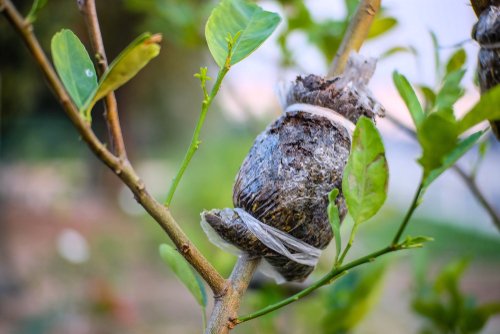
About halfway up the trunk, you can access a branch with a diameter of one to two inches. Again, it is better to utilise a significant addition than a little one to ensure good layering. Then, make a steep cut in the higher portions of the stem and two horizontal cuts at the top and bottom of the vertical amount. After that, peel the stem’s surrounding bark away. Again, auxin can be used to root a device more rapidly if it is available.
The cut portion is then wrapped in plastic, covered with moist peat moss, and secured with twist ties or rubber bands. Once roots are visible from all sides and have broken through the peat moss, it is ready to plant the cutting. The cutting can then be safely removed by cutting just below the roots. Some plants to attempt are crotons, dumb canes, dracaenas, rubber plants, Norfolk Island pines, Scheffleras, azaleas, magnolias, roses, and Oregon grape hollies.
Plants that propagate by layering naturally
Many plants, including many flowering herbs, trees and shrubs, can be forced to reproduce by layering the soil or the air. In addition, many plants, including ivy, cane berries, and strawberries, naturally produce in a manner akin to this by stacking.
The top layer of blackberries
If the lateral branches are allowed to grow and touch the ground, they will start to create roots when they come into contact with the soil.
Strawberry
Runners grow, ultimately becoming a new plant and root.
Succulents
Some produce progeny that develops into new daughter plants (hens and chicks come to mind).
Ways to improve layering success
Wound induction
The stem can be wounded to promote the development of adventitious roots. Slanting incisions less than half the diameter of the stem’s bottom are needed to separate the phloem partially. Auxin, a vital natural hormone that fosters root growth, moves through the phloem from the shoot tip to the roots. Auxin accumulates on top of the wound. Injured tissue produces callus, which is dedifferentiated plant tissue that grows into new plant organs. Another strategy is removing the bark from the stem while keeping the wood.
Light restriction/blanching
Limiting light usually promotes the formation of roots, so ensure your stem part is covered with substrate before covering it with plastic wrap. Aluminium foil can be used to reduce light further, and it is effective because it reflects both heat and light. When layering in the ground, ensure the area where you wish to grow new roots is entirely covered by soil or other media.
Plants used
Pick plants with flexible stems so they may bend to the ground without damage since this will help prevent being polluted by insects or infections. For most layering types, the growth from the most recent season is typically the most adaptable and nutritionally best adapted to develop new roots.
Rooting hormone
Auxin frequently increases the likelihood of success by a tiny amount.
Conclusion
In conclusion, some layering techniques are more effective for specific plants. Blackberries, for example, profit from tip layering. The most specialised forms of layering are tip layering and essential layering. Almost anyone may attempt these and succeed with the right plants. The chosen strategy will depend on the best way for the plant and how simple it is to propagate it. Choose wood for layering that would be trimmed during plant shaping. It’s simple and fun to layer. It is a terrific way to save money and is advantageous to nurseries and landscaping businesses.
FAQs
What does layering provide as a means of?
The purpose of layering is to increase the difficulty of tracking money through each layer.
Why do plants stack their tissues?
Cuttings are easier to make, but layering has the advantage that the piece being propagated continues to get water and nutrients from the parent plant as it grows roots. Therefore, it is crucial for plants that develop roots slowly or propagate huge parts.
What does plant budding entail?
To generate a beneficial variety (cultivar) and rootstock combination, budding is the process of putting a single bud from a desirable plant into an opening in the bark of a compatible rootstock.
What are grafting and layering?
Grafting is a practical method for expanding the variety of a single plant. However, only one kind of offspring can be produced through layering. In the world of horticulture, grafting is regarded as an efficient technique. However, when compared to the grafting procedure, layering is thought to be a less effective technique.
How can you safeguard your plants' roots?
You can try the layering method if you are seeking a low-risk, low-cost option to propagate your garden plants. Layering helps you to build a healthy, robust root system on the young plant before detaching it from the mother plant, unlike other techniques like cuttings and grafting. In addition, unlike division, only the new layered plant will be moved, preserving the mother plant's original root structure.
Housing News Desk is the news desk of leading online real estate portal, Housing.com. Housing News Desk focuses on a variety of topics such as real estate laws, taxes, current news, property trends, home loans, rentals, décor, green homes, home improvement, etc. The main objective of the news desk, is to cover the real estate sector from the perspective of providing information that is useful to the end-user.
Facebook: https://www.facebook.com/housing.com/
Twitter: https://twitter.com/Housing
Email: [email protected]
